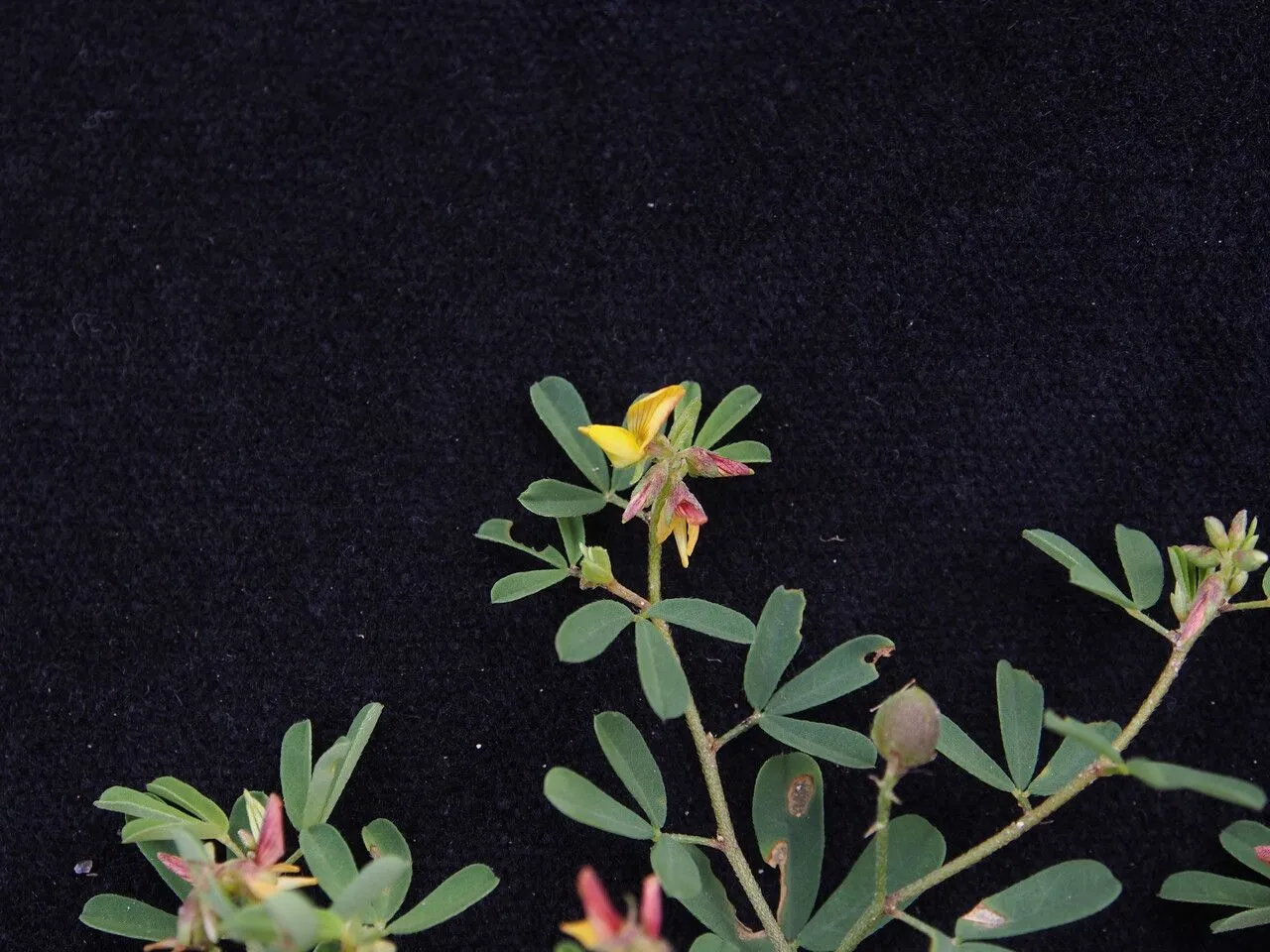
Author: Lam.
Bibliography: Encycl. 2: 201 (1786)
Year: 1786
Status: accepted
Rank: species
Genus: Crotalaria
Vegetable: Unknown
Observations: Trop. & Subtrop. Asia to N. & NE. Australia
Trefoil rattlepod, botanically known as Crotalaria medicaginea, is a notable member of the Fabaceae family. This intriguing plant was first described in 1786, securing its place in botanical history through the work of renowned taxonomist Jean-Baptiste Lamarck.
Native to the tropical and subtropical regions, Trefoil rattlepod flourishes across a vast range extending from Asia to Northern and Northeastern Australia. Its adaptability to diverse climates and terrains is a testament to its resilient nature. The plant is easily recognizable by its trifoliate leaves, typical of its genus, and its striking yellow flowers that often attract attention in its native habitats.
Belonging to the broader legume family, Trefoil rattlepod plays a significant ecological role. Like many members of Fabaceae, it is likely involved in nitrogen fixation, enriching the soil and supporting local ecosystems. This makes it a valuable species not only from a botanical standpoint but also for its ecological contributions.
The genus name “Crotalaria” reflects a distinctive feature of many species within this group—the rattling sound produced by the seeds within their pods. This characteristic has undoubtedly contributed to common names and local vernacular across the regions where these plants are found.
In conclusion, Trefoil rattlepod, Crotalaria medicaginea, embodies both botanical interest and ecological importance. Its widespread presence across tropical and subtropical Asia to Northern and Northeastern Australia highlights its adaptability and ecological significance within the Fabaceae family.
Eng: trefoil rattlepod
En: Trefoil rattlepod
Pt-br: Cascavel, Crotalária
Taken Sep 26, 2022 by sachin sharma (cc-by-sa)
Taken Sep 3, 2014 by Royal Botanic Garden Edinburgh – Patrick Kuss (cc-by-nc)
Taken Sep 3, 2014 by Royal Botanic Garden Edinburgh – Patrick Kuss (cc-by-nc)
Taken Sep 3, 2014 by Royal Botanic Garden Edinburgh – Patrick Kuss (cc-by-nc)
Taken Sep 3, 2014 by Royal Botanic Garden Edinburgh – Patrick Kuss (cc-by-nc)
Taken Sep 3, 2014 by Royal Botanic Garden Edinburgh – Patrick Kuss (cc-by-nc)
© copyright of the Board of Trustees of the Royal Botanic Gardens, Kew.
© copyright of the Board of Trustees of the Royal Botanic Gardens, Kew.
© copyright of the Board of Trustees of the Royal Botanic Gardens, Kew.
Family: Myrtaceae Author: (F.Muell.) K.D.Hill & L.A.S.Johnson Bibliography: Telopea 6: 402 (1995) Year: 1995 Status:…
Family: Rubiaceae Author: Pierre ex A.Froehner Bibliography: Notizbl. Bot. Gart. Berlin-Dahlem 1: 237 (1897) Year:…
Family: Sapindaceae Author: Koidz. Bibliography: J. Coll. Sci. Imp. Univ. Tokyo 32(1): 38 (1911) Year:…
Family: Asteraceae Author: A.Gray Bibliography: Pacif. Railr. Rep.: 107 (1857) Year: 1857 Status: accepted Rank:…
Family: Fabaceae Author: Medik. Bibliography: Vorles. Churpfälz. Phys.-Ökon. Ges. 2: 398 (1787) Year: 1787 Status:…
Family: Aspleniaceae Author: (Cav.) Alston Bibliography: Bull. Misc. Inform. Kew 1932: 309 (1932) Year: 1932…